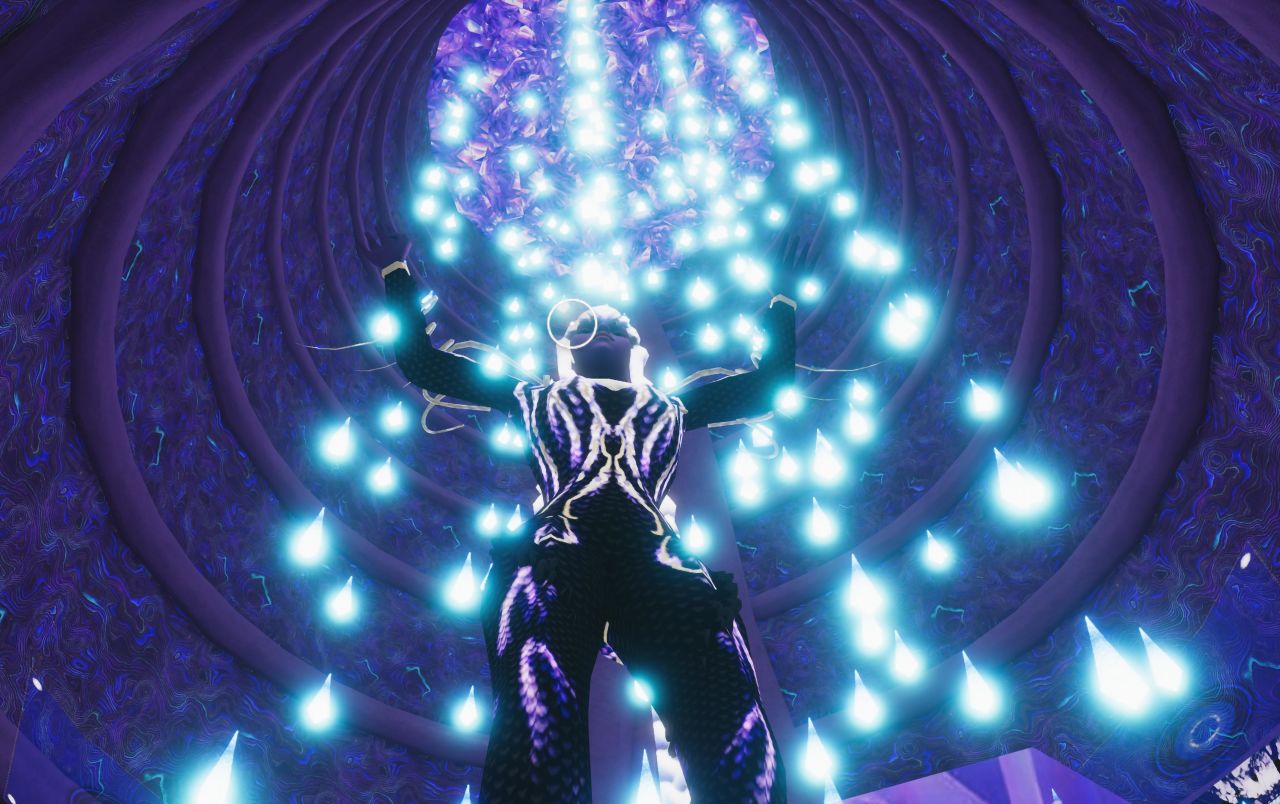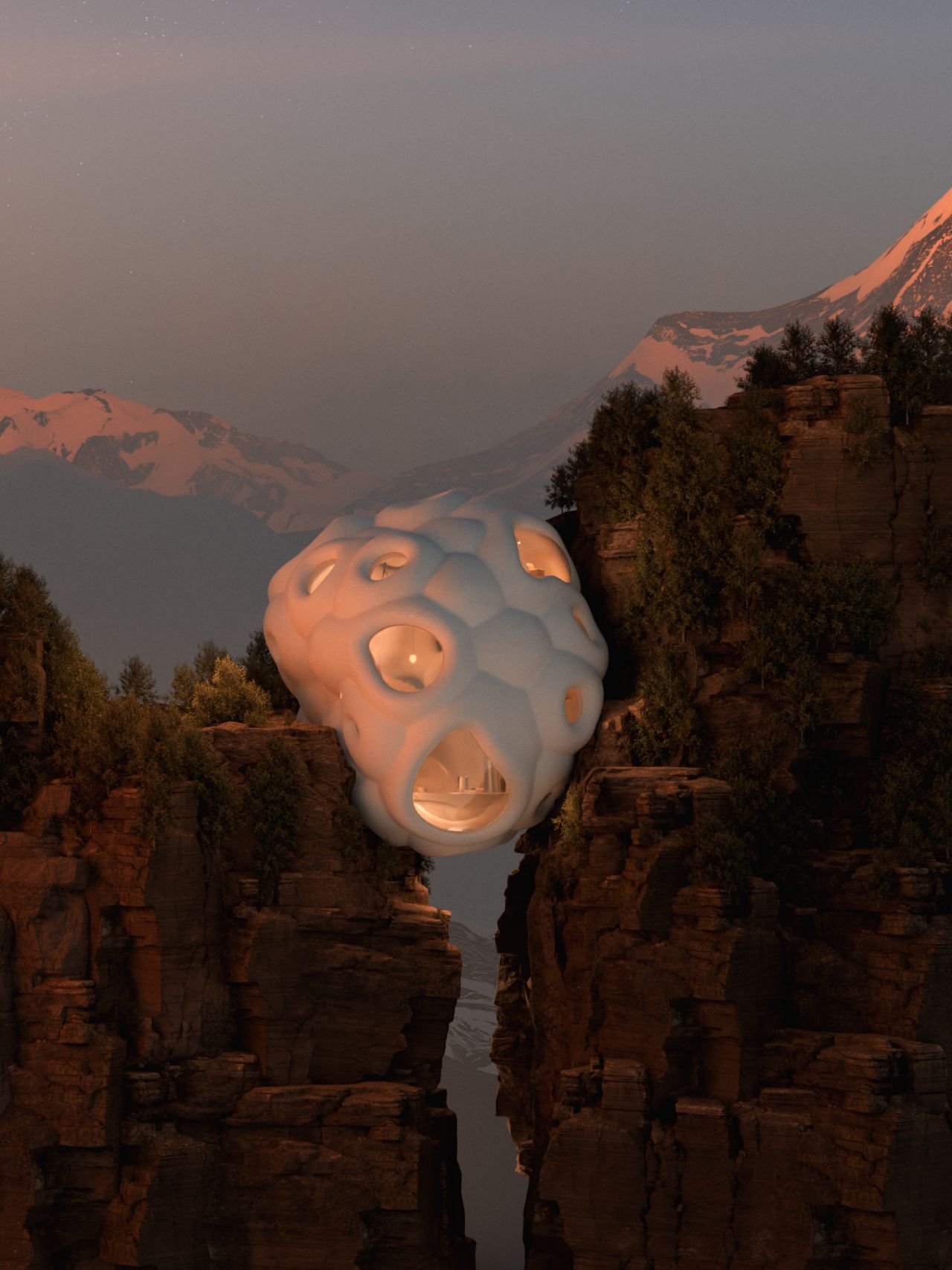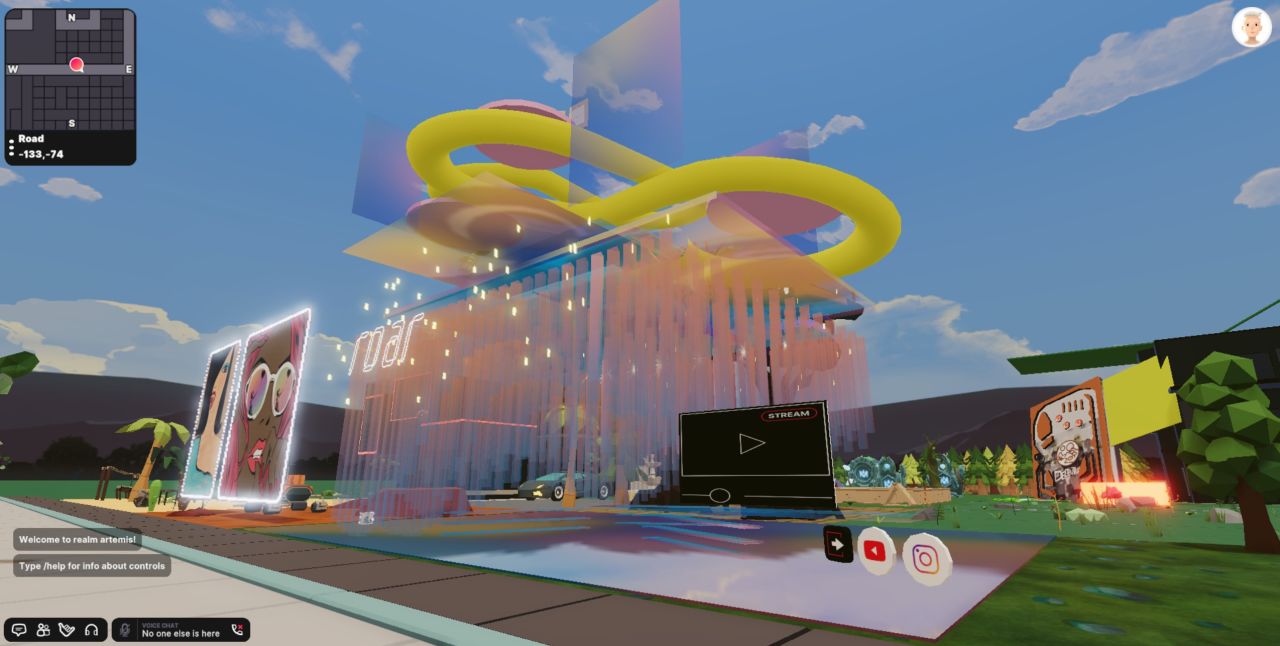CNN
—
Speak to people working in the metaverse and one descriptor follows it around: “It’s like the Wild West.” Make of that what you will. Is it a new frontier for people seeking their fortune? A lawless land? A place characterized by the unknown, removed from the rest of society? Perhaps all of the above. But one thing’s for sure – people in the Wild West weren’t dropping $650,000 in cryptocurrency on a digital yacht.
The metaverse – a growing number of immersive virtual online worlds where users live and play – has become a hotbed of real estate speculation. Investors are betting on it being an integral part of a possible paradigm shift in how we use the internet – a decentralized version called Web3, which its supporters argue will wrest control of the web from big tech companies and distribute power, privacy and security back to users.
According to consultancy firm McKinsey, corporations, venture capitalists and private equity invested $120 billion in the metaverse between January and May 2022, more than double the $57 billion invested in 2021.
But real estate values have had a rocky ride. Land prices in the four major metaverse platforms, The Sandbox, Decentraland, Cryptovoxels and Somnium Space, have fallen 50 to 80% this year, according to Winston Robson, CEO and co-founder of metaverse analytics company WeMeta. He pointed to problems in the real-world economy and the cryptocurrency market as contributing to the decline.
Look beyond the numbers, however, and you’ll find whole professions being shaken up, from architects and designers to developers and real estate agents. And far from being isolated to the metaverse, their ventures there are already impacting the real world.
George Bileca, CEO of Voxel Architects, studied architecture and design, and was working towards a career in car design when he was given some land in Cryptovoxels to play with. At the start of the pandemic, he used it to build a dealership to sell NFTs (non-fungible tokens) of digital cars designed by his friend. Two years later, Bileca has a team of 25 working full time in the metaverse.
Voxel Architects, headquartered in Portugal, has designed and built over 100 metaverse projects, said the CEO, including galleries for auction house Sotheby’s, fashion week venues and an NFT manufacturing plant for American artist Tom Sachs. Next up: an official Elvis Presley experience in The Sandbox and Decentraland.
Initially, the design process for metaverse buildings is much the same as in the real world, said Bileca. An architect or designer consults with a client, and sketches ideas, either on paper or computer. Once a design is agreed upon, it is 3D-modeled, using traditional design software, but conforming to the design spec of the metaverse it will populate (different metaverses use different building blocks, and have different texture and color ranges).
Then coding begins. “The build is only an empty carcass,” Bileca explained. “On top of that shell we add the functionality, like being able to open doors, to interact with artworks … to create custom (user interfaces), gameplay quests and many other interactive elements.” Once completed, it is deployed into a metaverse.

The studio charges an hourly rate for its work, with some projects running into the hundreds of thousands of dollars – the most expensive being close to $500,000 for designing, building and deploying a development in The Sandbox, says Bileca, who did not reveal the client.
Some are buying properties for recreational use; others are trying to generate revenue from their land. Some are building retail spaces or ticketed experiences; others are renting their land to brands trying to reach consumers in the metaverse. According to McKinsey, e-commerce in the metaverse could have up to a $2.6 trillion market impact by 2030.
LandVault claims to be the biggest land developer in the metaverse, renting its land to brands and developing campaigns for them. Just don’t call it advertizing, insists CEO Sam Huber. “In Web3 … the word actually doesn’t have a place,” he said. “What we’re building is not advertizing. It’s brand experiences, which is very different.”
He gave the example of playing a game in the metaverse, inside an arena bearing a Mastercard logo. “You can still play your game. That is not advertizing. That is not annoying. That is like real life,” he argued.
“(Online) advertising as we know it, intrusive … compromising user data and so on – that just doesn’t have a place in Web3.”

As with the real world, location has a large impact on rental price. Being in an area with high footfall, near a much-loved game or close to a prized asset (a celebrity’s house, for example) can be important. But some are making the case that good design has value too.
One advocate is Janine Yorio, CEO of Everyrealm. The metaverse development company, previously known as Republic Realm, has received $66 million in funding to date and is backed by celebrities including The Weeknd, Will Smith and Paris Hilton. Its luxury projects have generated headlines. In November 2021 Everyrealm bought 792 parcels of The Sandbox (the equivalent of about three square miles) for $4.3 million – still a record purchase. Around the same time it sold the $650,000 superyacht, the Metaflower, complete with DJ booth, helipad and hot tub for the discerning buyer.
The company’s latest venture is The Row, an upcoming invite-only community of 30 houses. Everyrealm invited artists including Daniel Arsham, Misha Kahn and Alexis Christodoulou to contribute designs. Alongside neoclassical buildings and giant cantilevers are alien shapes, fulfilling the promise of digital architecture unbound by the laws of physics.
“We really let the artists just have free rein,” said Yorio. The driving principal, she added, was “architecture so important and exclusive, that it becomes something that people look to as sort of a high watermark.”

Yorio cites Everyrealm’s Fantasy Island project – in which 100 private islands in The Sandbox sold out in a single afternoon in August 2021 – as an example of how these assets can appreciate. Sold at approximately $15,000 each, the CEO said they now trade for around $100,000, down from $250,000 at the height of the cryptocurrency and NFT market boom in late 2021.
Buyers of property in The Row will be purchasing architectural plans in the form of an NFT, which can be built and deployed on different platforms.

“We want to adhere to the ethos of decentralization,” Yorio said, but the sale model also speaks to the uncertainty that hangs over investing in the metaverse. “It’s very difficult to know which metaverse is going to be the most popular in one year or five years,” she said.
With the name of the development inspired by Billionaires’ Row in Manhattan, Everyrealm has enlisted the services of elite New York real estate brokers Oren and Tal Alexander to oversee sales.
The Alexander brothers are currently screening prospective buyers, said Yorio, with private sales starting in September. “We want to make sure that art goes to the right type of collectors, and not people that are looking to buy and flip and create that NFT hyper-speculation dynamic,” she explained. Prices were not disclosed to CNN.
Yorio disputed the idea The Row was an example of the metaverse heading towards social stratification. “This is about owning one of the first seminal works of three-dimensional inhabitable art in a new media. And I think that’s a very different conversation (to), ‘we’re building a country club that only 30 people can join,’” she argued.
The long-term value of metaverse property may also hinge on whether users decide to work as well as play there.
Pallavi Dean, CEO of Dubai-based design studio Roar, is already doing so, having bought company space in Decentraland. Dean wanted to showcase Roar’s work to clients and purchased four plots for around $60,000 in total in January 2022. “You have to have skin in the game before you convince other people,” she said. “I’m writing this off as marketing money.”
She’s already moved some of her business operations into the metaverse, hosting client meetings in Roar’s virtual office. In the next couple of months, she plans to run a training course from her metaverse meeting room.

Roar is also looking to generate revenue in the metaverse, building an NFT gallery, a retail space and floating pods which could become a hotel. Although Dean concedes she’s still waiting for her first rental and first NFT sale, she remains hopeful of future growth.
Given the short lifetime and rapid acceleration of the metaverse, long-term forecasting is hazardous – especially as the property market experiences growing pains. But could real estate in the metaverse ever become as reliable an investment as bricks and mortar? Or could this be Web3’s equivalent of the dot-com bubble?
“It’s hard to know if the real estate inside (metaverses) is going to be stable … Least of all us, and we’re deeply in it,” said Yorio.
Many on the outside may be viewing its long-term prospects with more than a hint of caution. Understandably, some people working in this burgeoning industry remain bullish.
“It’s very possible that real estate in the metaverse is a stable investment in the future,” said Robson, of analytics company WetMeta, in an email.
“This is not a bubble,” insisted Huber, who distils the metaverse down to a combination of two trends: gaming and the blockchain, neither of which could be called a fad. “There is an element of hype if you start zooming in – the price of land tripling over the last six months. It’s obviously driven by speculation. But this is a short blip and now it’s corrected.”
“(On a) short-term basis, there’s tons of hype,” he added. “But that’s not what I’m interested in. I’m interested in the macro – and the macro is definitely here to stay.”